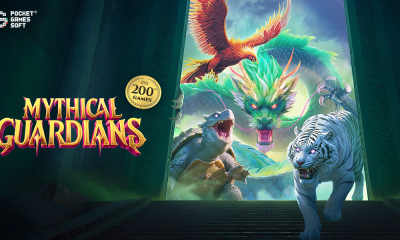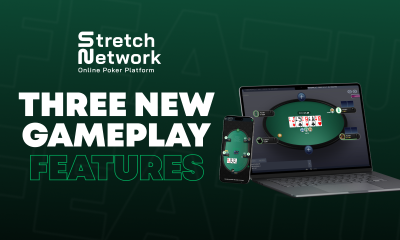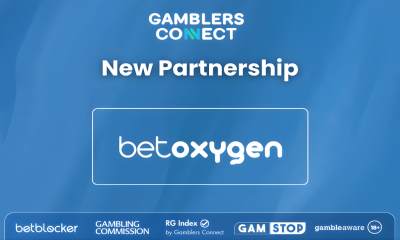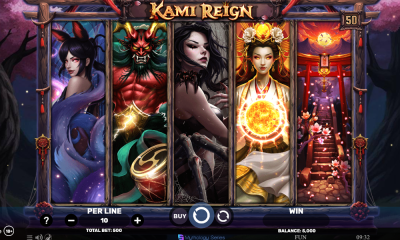Gaming
Mobile Games Index: Analysis of 95M Game Interactions Reveals Shifting Engagement Trends, Available Now
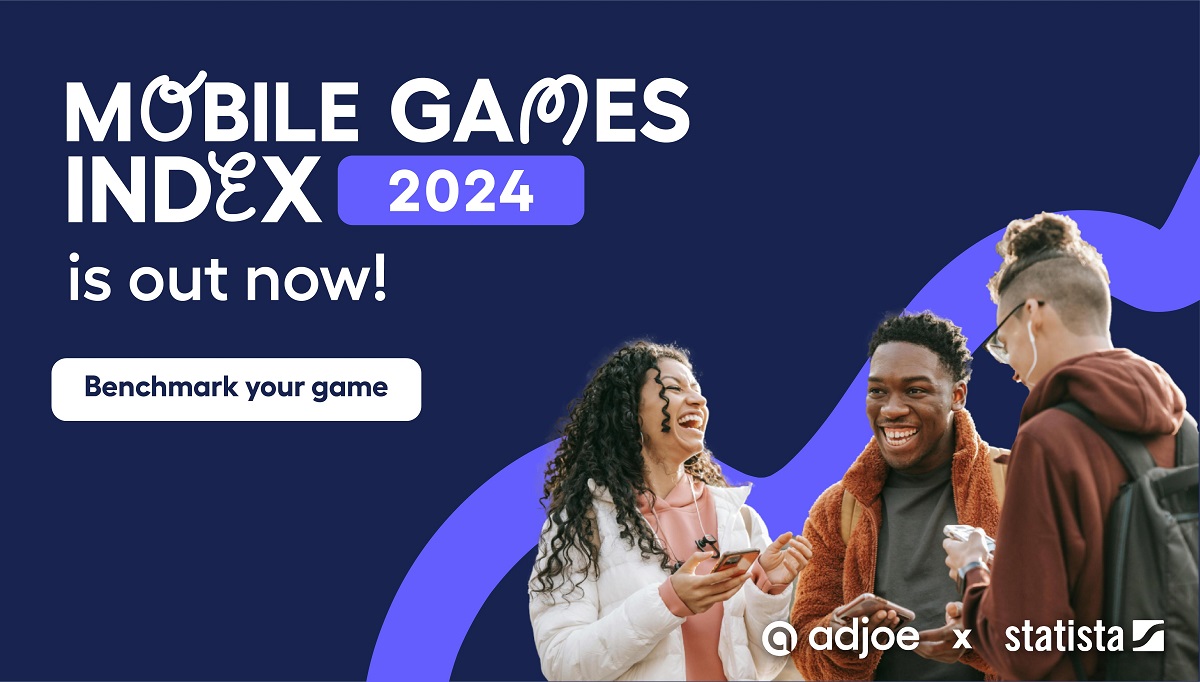
The anticipated fourth edition of the annual Mobile Games Index, powered by adjoe and Statista, is now available.
The latest report offers a clear look into the current state of the mobile gaming sector, analyzing the past 12 months of the first-party data from 95 million app interactions across 27 million users. The MGI 2024 reveals what people choose to play on their mobile devices, filling the gap in industry knowledge and enabling game developers and user acquisition specialists to benchmark their products and ultimately target the right audiences with the right content.
Moving forward, it is up to the industry decision-makers to analyze the findings and promptly adapt to the newly-emerged engagement trends from MGI 2024, effectively engaging desired audiences.
A Peek at Shifting Engagement Trends to Capitalize on
Based on predictions from Statista, the overarching trend in the market is its robust growth with a forecasted expansion from $166.1 billion in 2024 to $227 billion by 2028.
Remarkably, Card games are expected to grow the most dramatically at 13.8% a year, nearly doubling their global revenue by 2028. Judging from the engagement charts of MGI 2024, the main driver of growth in this category is Solitaire games. The audience is showing a clear preference for Solitaire – these games hold 7 out of 10 positions in the top list of card games worldwide by time spent with titles from MobilityWare, Gimica, Scopely, and Playvalve, among others.
What allows the market to show revenue growth is the positive changes in global daily time spent. After the dip in engagement highlighted by the last year’s Index, adjoe confirms that average daily sessions have rebounded to 21.5 minutes from 17.3 minutes reported last year, marking a 22% increase.
The most engaged demographic of mobile gamers globally is the 40-49 age group, which has experienced a remarkable 33% increase in daily gaming time, now at 23 minutes daily. The strategies targeted at older demographics over the past 12 months can be deemed successful. However, this has led to a loss of focus on engaging Gen-Z, which has shown only modest growth in time spent.
The MGI also reveals that women are outpacing men in daily gaming time across most genres – as reported for the 4th edition in a row. This consistent and high performance makes the female audience a continuously safer bet when it comes to user targeting.
Another continued trend is the dominance of top publishers such as Supercell, Garena, King, and Playrix, while there’s still space to occupy for smaller publishers. For instance, ForgeGames tops the engagement charts with their game Special Forces Group 2 – capturing over 43 minutes of average daily engagement.
The insights continue in the MGI 2024, going granular to segment and visualize global mobile game engagement data from adjoe by genre, region, and demographic. At the same time, Statista’s extensive market research provides a macro-view of the current and future industry, offering figures for global downloads and revenues with forecasts extending to 2028.
Mobile Games Index 2024 Is Available in Open Access
The MGI 2024 goes deep below the surface of market data and creates a comprehensive snapshot of the mobile gaming industry today. Inside are
For developers and marketers, this report is the green light to benchmark performance against industry leaders and align their products with the rising expectations of mobile gamers. This comprehensive tool is now available for free to inform decision-making and help optimize strategies for short- and long-term actions.
The post Mobile Games Index: Analysis of 95M Game Interactions Reveals Shifting Engagement Trends, Available Now appeared first on European Gaming Industry News.
Arena Racing Company
Arena Racing Company awarded United Arab Emirates Gaming-Related Vendor License

Arena Racing Company (ARC) has been granted a Gaming-Related Vendor license from the United Arab Emirates’ General Commercial Gaming Authority (GCGRA), an independent entity of the UAE Federal Government with exclusive jurisdiction to regulate, license, and supervise all commercial gaming activities.
The license, operational with immediate effect, affords ARC the opportunity to provide its products and services to licensed operators in the region. Notably, the Racing1 Markets service, an all-in-one horse and greyhound racing solution delivered in conjunction with Racing1 alliance media rights partners at 1/ST CONTENT, Racecourse Media Group (RMG), and Tabcorp, alongside technical partner Pythia Sports. ARC has been added to the list of licensed vendors as per the GCGRA website.
Jack Whitaker, Commercial Manager at ARC, said: “Obtaining this license is a great achievement for ARC and its Racing1 partners. The emerging regulated UAE market is incredibly exciting, and we look forward to showcasing our innovative products and services in the region.”
The post Arena Racing Company awarded United Arab Emirates Gaming-Related Vendor License appeared first on Gaming and Gambling Industry Newsroom.
Battle of the Tribes
POLYTOPIA WORLD CHAMPIONSHIP 2025 BREAKS RECORD PARTICIPATION AS FINALS DRAW CLOSER

Reading Time: 2 minutes
Celebrated strategy game The Battle of Polytopia confirms its first ever World Championships has exceeded expectations with over 10,000 sign-ups in its qualifying rounds. While no stranger to tournaments, previously hosting smaller scale, local tournaments called ‘Polysseums’, developer Midjiwan’s first step into global esports has been met with extreme success. The inclusive esports event has a $10,000 prize pool and will conclude on 6 December 2025, 14:00-21:00.
The finals will take place in front of a live-studio audience, with expert commentary and a chance to peek behind the scenes at Midjiwan itself. First place will receive $4,000, the runner-up will take away $2,000, the third and fourth place finishers will get $1,500, and the fifth and sixth place $500.
The Polytopia World Championship 2025 is being hosted by eSports platform, Challengermode, who Midjiwan has relied on for its monthly local tournaments since 2022. Midjiwan also partnered with Black Molly Entertainment to help organise and manage the event. Black Molly Entertainment have years of experience managing eSports tournaments, with notable events including the Geoguesser World Cup and CS:GO Pinnacle Cup Championship.
Midjiwan has worked closely with its community to ensure engagement is high with each round, building a bespoke ‘Spectator Mode’ into the game so fans can watch each game live through the game itself. In the spectator mode the viewer has visibility of all players simultaneously, with stats on how many cities, technologies, kills and more available for quick access.
Christian Lovstedt, CEO of Midjiwan commented:
“Polytopia has always been about welcoming all kinds of players into the world of 4X strategy. That’s why our championship is open to everyone – not just pros with sponsors. We’ve been thrilled at the amount of interest this tournament received from our community, reaching participation numbers way beyond our expectations. We’re excited to bring the finalists to Stockholm and can’t wait to see the strategies that emerge.”
The Polytopia World Championship 2025 kicked off in September, with its ‘Battle of the Tribes’ qualifying round – weekly battles where players competed to be the best in each of the game’s 12 tribes. After an exciting six weeks, the top player from each tribe faced-off, reducing the qualifiers to six finalists. These six winners are listed down below.
|
Tribe |
Qualifying Player |
|
IMPERIUS |
ArthurL248 |
|
BARDUR |
slimmingboy |
|
OUMAJI |
Dreamlander3000 |
|
HOODRICK |
Theetat |
|
XIN-Xi |
LeLiberateur |
|
LUXIDOOR |
Meisterlampe |
Recaps of each round of the tournament prior to the finals can be watched on the official Battle of Polytopia YouTube channel.
-
Part 1: Polytopia World Championship 1st Qualifiers Wrap-Up – BARDUR, IMPERIUS, KICKOO, ZEBASI
-
Part 2: Qualifiers Wrap-Up – Oumaji Hoodrick Yadakk & Quetzali – World Champoinship 2025
-
Part 3: Final Qualifiers Wrap-Up – Xin-Xi, Luxidoor, Ai-Mo & Vengir – World Championship 2025
-
Face-off stream: https://youtube.com/live/GnU6mWPoJiY?feature=share
To watch the finals live on December 6,visit here: https://polytopia.io/stream/
To stay up to date on the Polytopia World Championship 2025, or purchase one of the limited tickets for the live event, visit the official website or join the Official Polytopia Discord.
The post POLYTOPIA WORLD CHAMPIONSHIP 2025 BREAKS RECORD PARTICIPATION AS FINALS DRAW CLOSER appeared first on European Gaming Industry News.
Betiator
Delasport Unveils a Crash Game for Sports Betting

Reading Time: 2 minutes
Leading iGaming supplier Delasport teases a one-of-a-kind sports betting crash game called Betiator – a new in-play experience that merges live sports with the tension and excitement of crash games.
Inspired by the groundbreaking casino genre, the company once again pushes the whole industry to a new phase in evolution by allowing sports bettors to play in the same easy and fun way as fellow casino players. Crash games are booming in the casino world, showing that players crave more emotional, fast, and visually engaging formats – and Betiator brings that same adrenaline-charged energy to the sportsbook.
It changes the scene by introducing a truly innovative way to bet on sports, keeping players at the edge of their seats during the game. Designed to excite both sports bettors and casino players, it marks a defining moment for innovation.
This product comes as a logical next step in the evolution of live betting and the company’s goal to disrupt the iGaming industry. It demonstrates Delasport’s successful commitment to unique innovation: a strategy they call “Going Beyond Content” –building on the success of products and features like SuperPot, My Sportsbook, My Combo, Double My Winnings, and many more.
“Sports bettors deserve the same level of innovation and excitement that casino players get all the time,” Delasport’s CEO Oren Cohen Shwartz says. “At Delasport we’re taking the whole game to a new playing field with Betiator. Live betting won’t feel outdated anymore as we’re bringing in the thrill of the casino to sports betting.”
While details about Betiator remain under wraps for now, Delasport promises a completely new way to experience live sports. Operators and partners eager to see it in action can schedule exclusive demos and discover more at ICE Barcelona 2026, taking place January 19–21, where Betiator will make its official debut.
The post Delasport Unveils a Crash Game for Sports Betting appeared first on European Gaming Industry News.
-

 Five Elements Slot1 day ago
Five Elements Slot1 day agoPG Soft Concludes 2025 with High-Volatility Launch: Mythical Guardians
-

 Button Blind1 day ago
Button Blind1 day agoStretch Network Boosts Player Engagement with Year-End Platform Enhancements
-

 B2B gaming software1 day ago
B2B gaming software1 day agoGamblers Connect and BetOxygen Announce Strategic B2B Partnership
-

 Latest News1 day ago
Latest News1 day ago‘Chaos and Soul’: Ebaka Games Plots Global Expansion After Viral Launch
-

 Hold and1 day ago
Hold and1 day agoPragmatic Play Rings in 2026 with Joker’s Jewels Hold & Spin™
-

 Bespoke Gaming Studio21 hours ago
Bespoke Gaming Studio21 hours agoCreedRoomz and Casumo Forge Strategic Partnership to Elevate Live Casino Experience
-

 iGaming News 20261 day ago
iGaming News 20261 day agoSpinomenal Rings in 2026 with Japanese-Inspired “Kami Reign Ultra Mode”
-

 Latest News1 day ago
Latest News1 day agoFrom ‘Mummyverse’ to Crash Games: Belatra Reviews a Landmark 2025
















